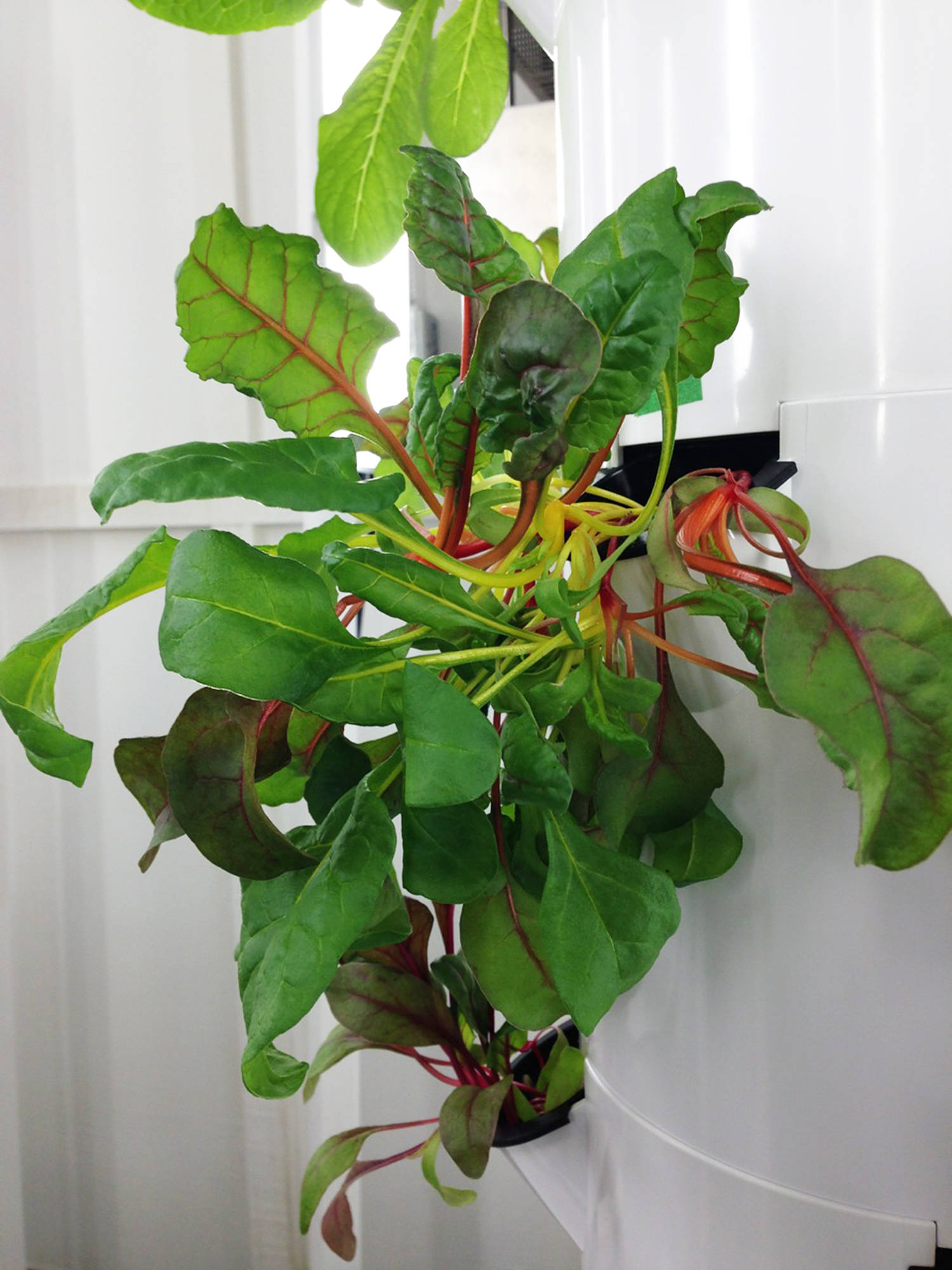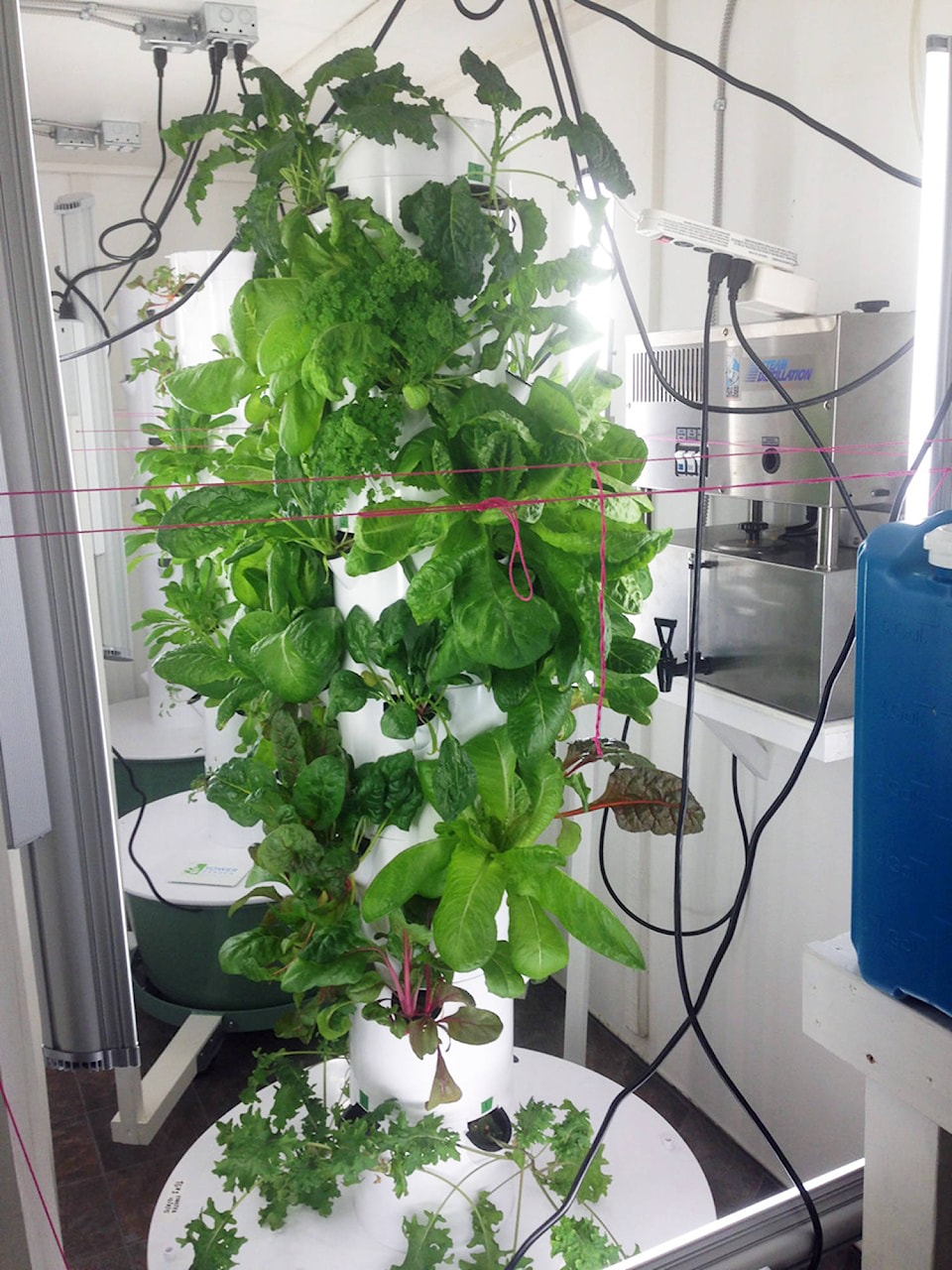The Nuxalk Nation is being awarded $100,000 from the Rural Dividend Program for Phase 1 design of a project that will lead to a large-scale wholesale commercial agricultural business.
The project will use hydroponic technology to grow vegetables for the Bella Coola Valley, year-round, and has been tested over the past five years under the direction of local scientist Joan Esnayra.
Esnayra is a First Nations scientist with a Ph.D. in Biology. Her Nuxalk name conferred by adoption into the Snow Family is ‘Qlahona’ which means ‘Water Woman’.
Passionate about agricultural hydroponics, she submitted a proposal to Nuxalk Development Corporation (NDC) outlining her plans for a demonstration project in agriculture.
“The project really began in 2014 with the successful application to NDC for the agriculture demonstration project,” said Esnayra. “It was funded by a $30,000 grant from the Coast Development Fund and an in-kind contribution of $10,000 from NDC.”
These funds were used to set up a small, high-tech hydroponics facility located at Totem Sawmills. Esnayra, who is exquisitely sensitive to electromagnetic fields, conducted hours of research to design a facility that would optimally manage these fields, thereby producing healthier plants.
After careful consideration, they chose lettuce as their test subject. Simple to grow and maintain, lettuce seemed the ideal choice for the demonstration project.
“Once you get into flowering plants such as tomatoes the procedures become more complex and require more infrastructure,” said Esnayra. “So we kept a simple goal of growing lettuce and selling it wholesale for one year,”
With input from local merchants, Esnayra settled on a mix of gourmet lettuce greens. The plants were grown using “grow towers,” which are structures that hold the plants in individual sections while they are watered from the top down.
As Esnayra explains, the design bathes the roots in a nutrient-rich solution and delivers a boost of oxygen to the plants, thereby expediting their growth.
The demonstration project was a resounding success.
“I would harvest the lettuce once a week and deliver it to our merchant,” said Esnayra. “We had extra so we began to supply some local lodges and everyone began calling me the ‘lettuce lady.’”
The demonstration project ended in October of 2016, and Esnayra then turned her sights on doing more research.
“We were awarded a $10,000 grant from the rural dividend program to conduct a feasibility study for a commercial scale-up,” she said. “Over the course of a year I gathered local information from grocery store owners on their produce sales, compared prices, and basically did a market analysis on the technical feasibility of a full-scale, wholesale hydroponic facility here in Bella Coola.”
Esnayra’s research, which is captured in a 40 page report, yielded some interesting results. To put it in perspective, Valley shoppers consume 400 lbs of vine tomatoes per week. Thus, a 10,000 square foot facility would be needed to meet the Valley’s demand of fresh vegetables and herbs.
The report concluded that the demand for the facility is here, but the challenges of building it are another matter. The Nuxalk Nation took over supporting the project from NDC and supported the latest grant application to the rural dividend fund in 2018.
“The $100,000 grant from rural dividend is intended to support Phase One design of the project,” said Esnayra. “This aspect of the project will engage architects and engineers to develop a cost-to-construct estimate for the proposed 10,000 square foot facility.”
As with any large-scale project, challenges are imminent. Esnayra has already faced the problems associated with location, producing enough electricity, labour costs and numerous other hurdles.
The project fits well with the government’s recent statements on commitments to local food security.
As most Valley residents are aware, all of our food is trucked into the Valley twice per week, creating a rather precarious situation if we were ever to find ourselves cut off from the supply chain.
“Indigenous and remote communities lack financial supports found in larger cities. The projects funded today will not only improve food security and energy production, but also assist First Nations communities in creating new economic opportunities,” said Jennifer Rice, MLA for North Coast. “I’m proud to be a part of a government that cares for rural, remote and coastal First Nations communities.”
The Nuxalk Nation is not the only nation on the coast that is being awarded the funding.
The Kitasoo Indian Band in Klemtu is being awarded $500,000 for upgrades to the Baron Lake Hydropower facility to allow for greater power output from the original 600 kilowatt hydro plant, reduce diesel dependency and support population growth and economic opportunities.
The Skidegate Band Council is being awarded $72,000 to complete a feasibility study for the widespread adoption of solar photovoltaic technologies in Skidegate.
The study includes an assessment of battery storage solutions to reduce diesel power dependency, and the Wuikinuxv Nation in Oweekeeno is being awarded $97,938 to support implementation of a comprehensive community energy management system to reduce the cost of electricity in off-grid Wuikinuxv Village.
Despite the challenges, Esnayra remains optimistic about the project’s viability and its ultimate success.
“We have an opportunity here to create a cutting-edge, flagship facility,” she explained. “It’s an exciting project and I’m hopeful it will continue to flourish.”

